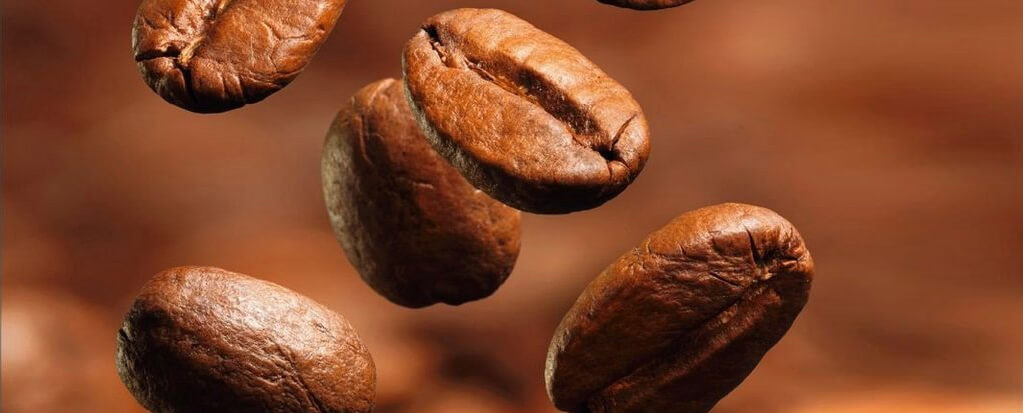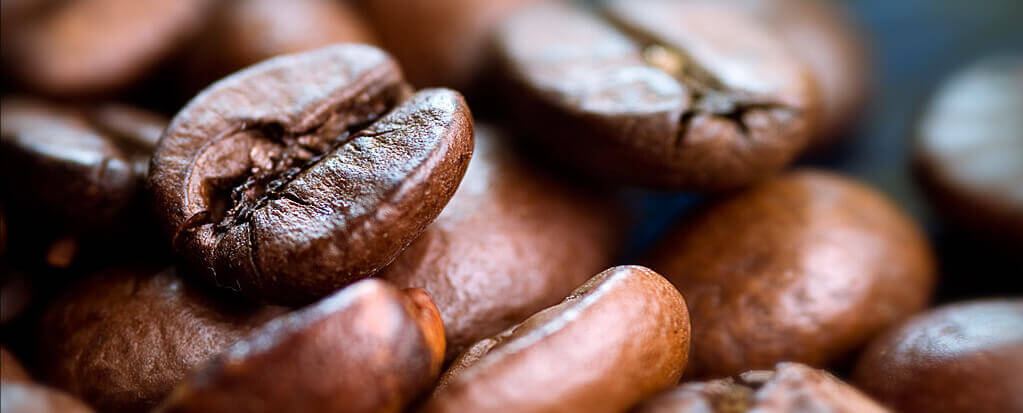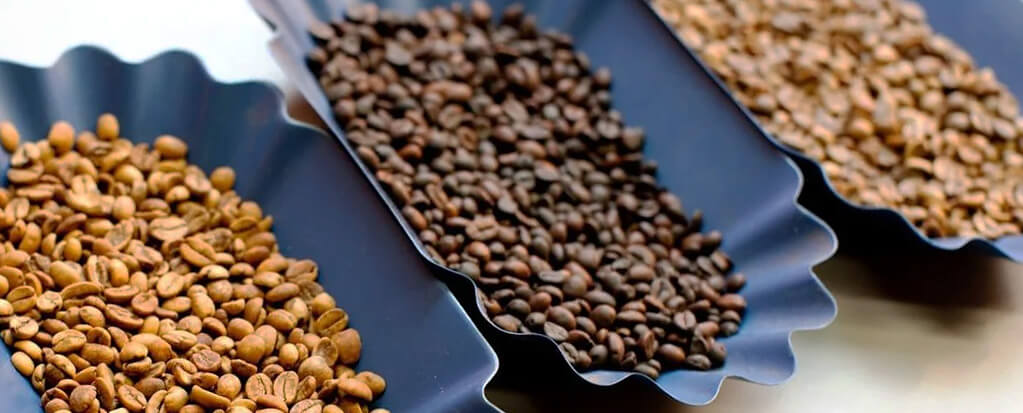PAY ATTENTION TO THREE PACKAGING INSTRUCTIONS
Pay attention to the following packaging instructions and you will be rewarded with your favourite coffee:
1. Where does the coffee come from?
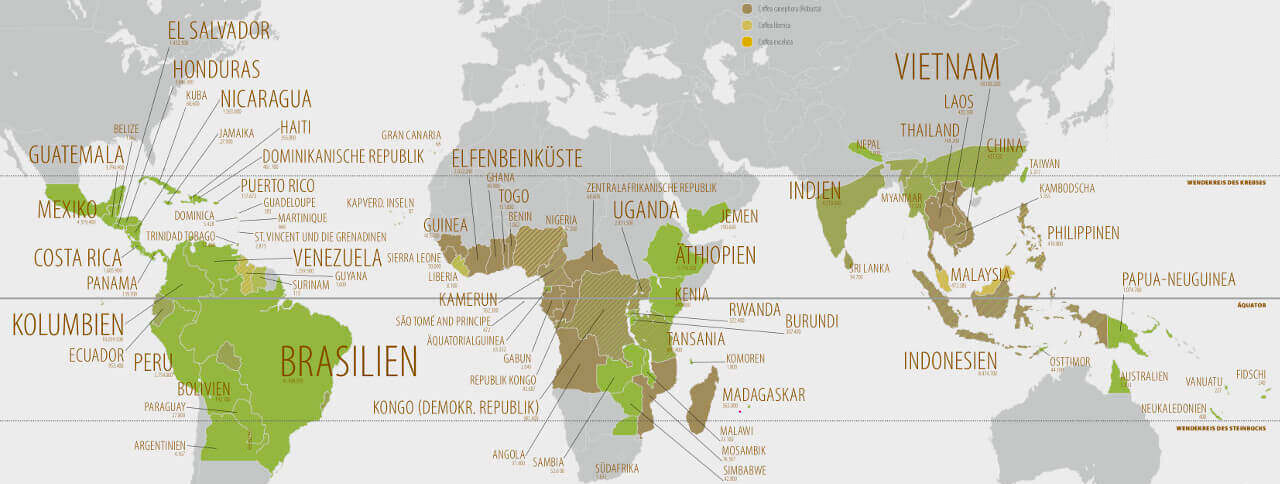
The coffee belt
Coffee grows from the 23rd parallel north and south of the equator once around the globe. Depending on the country and the climatic conditions in which it was grown, it tastes correspondingly different. Roughly speaking, coffees from Central and South America are on the chocolaty to nutty side, coffees from Africa are more fruity and coffees from Asia are on the bitter and strong side. Of course, it is important that attention is paid to quality during cultivation in order to obtain a coffee with a good flavour.
The two main types of coffee grown are Coffee Arabica and Coeffea Canephora, also known as Robusta. Brazil is the world's largest coffee-growing country with a global market share of around 60%. Colombia is in second place and Vietnam in third, but with Robusta coffee. Whether we drink a 100% Arabica or a coffee with a Robusta content makes a difference to the flavour. Arabicas are generally milder and gentler on our stomachs, but the Robusta variety provides a caffeine kick in the morning, as it contains more than twice as much caffeine as the Arabica variety. But be careful! The Robusta variety can also cause stomach problems as it contains a lot more acids. We don't taste them, but depending on how well we tolerate them, our stomachs will react.
2. How was the coffee prepared?
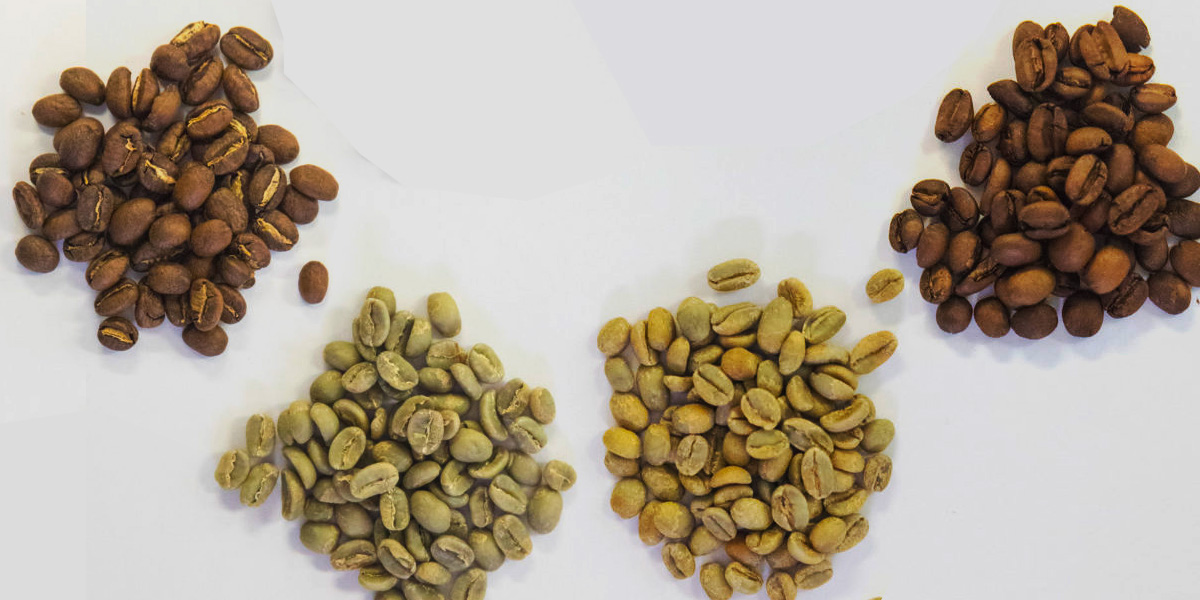
The much more important indication of how our coffee ultimately tastes is the processing method. In other words, how the coffee was dried.
There are different processing methods
Washed: The coffee is completely washed before the drying process, i.e. the pulp is removed and then the beans are placed in large water tanks containing enzymes and yeasts to dissolve the so-called mucilage. The beans are then left to dry for up to a week. The coffee tastes very clear and clean and contains beautiful fruit acids, which come into their own with the appropriate preparation.
Natural: Unlike washed coffee, the whole fruit is dried here and only in a second step is the bean separated from the pulp. The drying process takes around two weeks. The result is a sweet, fruity coffee with a medium to heavy body. Here too, these flavours only come to the fore with the appropriate roasting. Whether washed or natural can be recognised by eye. At the top left of the picture, you can still see the parchment skin; on the right, the beans look more uniform.
Honey: This processing method is something between washed and natural. Although the pulp is peeled off, the beans are not placed in a water bath afterwards but dried together with the mucilage. The result is a coffee with a light to medium body, subtle fruit acids and a pleasant sweetness.
3. How was it roasted?
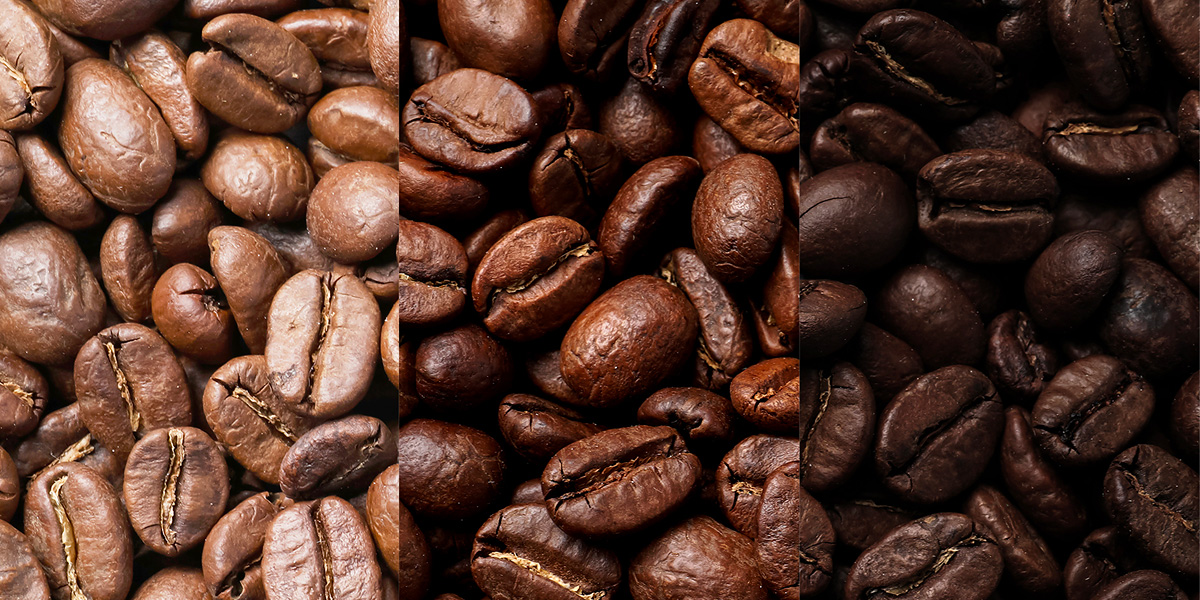
The degree of roast is the third parameter that determines how our coffee tastes. There are light, medium, dark and Italian roasts. The darker the roast, the more porous the beans become and the more oil comes to the surface. Italian roasts are often very oily and have intense aromas of nuts and tobacco.
Light roasts are very fruity and, depending on the processing method, contain more or less fruit acids in terms of flavour. Medium roasts only have very subtle fruity flavours and tend to have a chocolatey taste. Dark roasts can have a nutty, chocolaty or caramel flavour.
Be careful, the terms light, medium and dark are not universal terms! What one roaster describes as a medium roast may mean light or dark for another!
These instructions are intended as a guideline. Of course, there are always exceptions to the rule.
 freshly roasted coffee
freshly roasted coffee  Free shipping from CHF 90.00
Free shipping from CHF 90.00 






